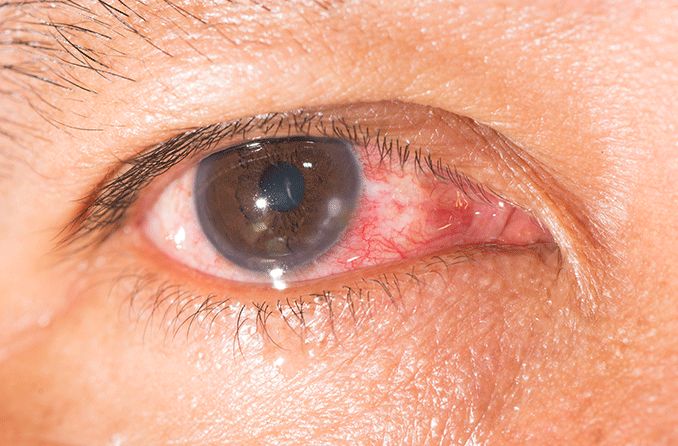
A good eyesight without the need of using glasses or contact lenses is a privilege and many take this for granted. In the world of medicine nowadays, many eye disorders can actually be treated and enable a person to still see the beauty of the world. Those with already good eye vision should take care of their eye health by getting regular eye check-ups to identify problems early on if there are any. There are many eye problems that can affect a person’s eye vision. Here we will take a look at one of the eye disorders known as keratitis and how to treat it.
Keratitis is defined as the inflammation of the cornea. Cornea is the most outer part of the eyes, with a clear inside and dome shaped window. Cornea covers the coloured part called iris and the hole made up by the iris allowing light to pass called pupil. Keratitis may or may not be caused by infections. In cases of non-infectious keratitis, it can be caused by eye injury, foreign body in the eye or prolonged wear of the contact lenses. In cases of infectious keratitis, it can be caused by bacteria, viruses, fungus or parasites.
Keratitis most often comes from trauma to the cornea. This could be from poking or scratching the eyes with fingernail. Injury leads to inflammation and most often also be the entry way for infection to occur. Viral infection is most likely due to herpes simplex, chicken pox virus or common cold. It is often spread from touching the eyes that have been infected by the virus after touching the lesion affected. There are reasons why people wearing contact lenses are at high risk for keratitis both from bacterial or fungal infection because these organisms easily enter the eyes through usage of dirty contact lenses. Fungal infections are likely to happen from scratches of branch or plant materials but may also be caused by misuse of steroid eye drops. Parasitic infection can be caused by amoeba living in the water and entering through the contact lenses while swimming. Parasitic infection is the rare cause of keratitis but it is the most difficult one to treat.
Now that you have known lots of causes that could lead to keratitis, you may wonder if the symptoms are the same? In general, symptoms of keratitis are the same no matter what is the cause. This includes sudden blurry vision, pinkie eyes, excessive tearing and light sensitivity that hurts the eye. Other symptoms include difficulty opening the eyelid due to pain or irritation, decreased vision and feeling like there is something in the eyes. It is best to get medical advice once any of these symptoms are experienced. This is because treating keratitis can give a good outcome or minimal damages while leaving it untreated may actually lead to permanent vision loss such as blindness.
When you meet a doctor with concerns of keratitis, doctors will usually ask what happened and your medical history. Apart from basic eye tests such as visual acuity tests, special tests such as using biomicroscope is used to get a closer look of the cornea and surrounding area of the eye. They may apply stains on the eyes in the form of liquid droplets to see the number of damages on the cornea. At times, doctors may proceed with biopsy or culture should they suspect it is an infection.
Keratitis is treated bases on the causes. For mild cases of non-infectious keratitis, it may actually heal on its own and doctor will recommend patient to use artificial tear drops. In severe cases of non-infectious keratitis or keratitis that is painful, anti-inflammatory eye medications is given to help reduce discomfort and antibiotic eye drops may be prescribed to help prevent infections. In bacterial keratitis, treatment depends on the severity of the infection. For mild one, antibiotic eye drops should suffice but in severe one, patient need to take oral antibiotic. Antifungal medication is used for fungal keratitis. Antiviral eye drops and/or oral antiviral medications are used to treat keratitis caused by viruses. In keratitis caused by parasite such as acanthamoeba keratitis, corneal transplant may be needed in severe case.
The best way to treat keratitis is to prevent getting one. Since keratitis is very common in those using contact lenses, below are ways to make sure you are wearing contact lenses in the safest way:
- Follow doctor or optometrist recommendation of taking care of contact lenses.
- Make sure to wash hands and to completely dry hands before touching contact lenses and eyes.
- Always use fresh solutions to clean and store contact lenses. Never use tap water for this purpose.
- Make sure to regularly clean the area where you store and keep contact lenses.
- Never sleep while wearing contact lenses.
- Avoid swimming or taking a shower while using contact lenses.
- Replace contact lenses and contact lens storage cases regularly.
In essence, keratitis is more than just eye pain or blurry vision. Failing to treat it as early as possible may lead to corneal scarring as its complications. It even may lead to blindness if it is left untreated. It is best to see doctor whenever symptoms of keratitis is noticed.
Buy Exelon Patch 5 (4.6mg/24hr) Transdermal Patch 30s.







